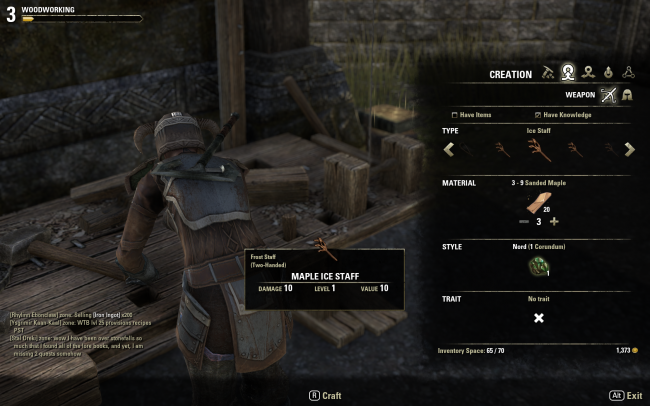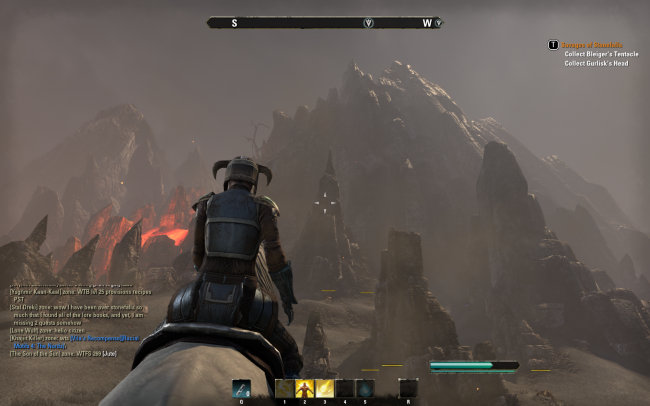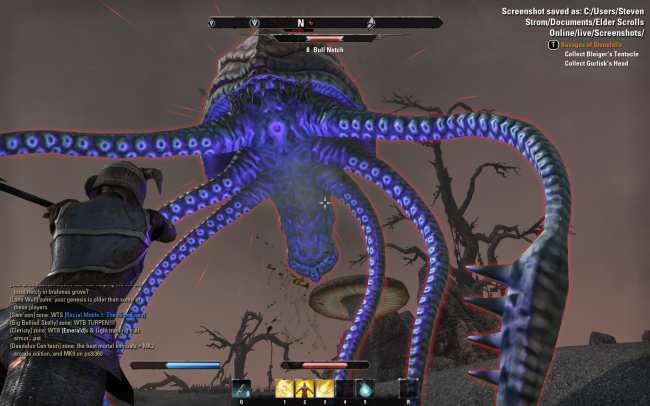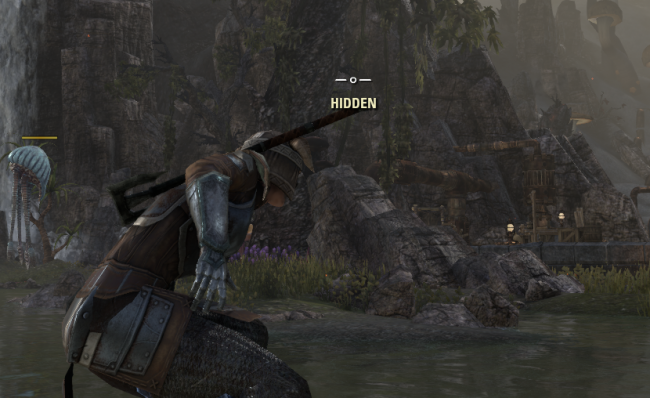- Wondering how to get Monopoly GO! free rolls? Well, you’ve come to the right place. In this guide, we provide you with a bunch of tips and tricks to get some free rolls for the hit new mobile game. We’ll …
Best Roblox Horror Games to Play Right Now – Updated Weekly
By Adele Wilson
Our Best Roblox Horror Games guide features the scariest and most creative experiences to play right now on the platform!The BEST Roblox Games of The Week – Games You Need To Play!
By Sho Roberts
Our feature shares our pick for the Best Roblox Games of the week! With our feature, we guarantee you'll find something new to play!Type Soul Clan Rarity Guide – All Legendary And Common Clans Listed!
By Nathan Ball
Wondering what your odds of rolling a particular Clan are? Wonder no more, with my handy Type Soul Clan Rarity guide.
The Elder Scrolls Online Review Diary: Crafting and Exploration
Crafting isn’t something I generally spend a lot of time with in MMOs. I usually find anything I want can be bought with gold I earned doing something more interesting than clicking “create” and watching progress bars fill up.
The Elder Scrolls Online puts a surprisingly tall – and very enjoyable – emphasis on crafting. I was skeptical at first, but after spending most of an entire day exploring Cyrodiil, gathering materials and custom-building my personal arsenal I’m quite hooked.
You see, crafting isn’t treated like a completely separate aspect of the TESO experience. Each trade has its own skill tree, augmented with the same skill points used to build up a character’s combat abilities. Some might groan at the tough choice between learning a new spell and being able to highlight resource nodes – and it does feel like a sacrifice at first – but it shows how important the developers want crafting to be.

In most games, crafting is a gradual, granular slog. You build the crappy equipment until you’ve leveled up enough to make the slightly-less-crappy equipment and so on. TESO makes the time I spend feel worthwhile, as I leave a personal mark on each unique steel snowflake.

Crafting isn’t something I generally spend a lot of time with in MMOs. I usually find anything I want can be bought with gold I earned doing something more interesting than clicking “create” and watching progress bars fill up.
The Elder Scrolls Online puts a surprisingly tall – and very enjoyable – emphasis on crafting. I was skeptical at first, but after spending most of an entire day exploring Cyrodiil, gathering materials and custom-building my personal arsenal I’m quite hooked.
You see, crafting isn’t treated like a completely separate aspect of the TESO experience. Each trade has its own skill tree, augmented with the same skill points used to build up a character’s combat abilities. Some might groan at the tough choice between learning a new spell and being able to highlight resource nodes – and it does feel like a sacrifice at first – but it shows how important the developers want crafting to be.

In most games, crafting is a gradual, granular slog. You build the crappy equipment until you’ve leveled up enough to make the slightly-less-crappy equipment and so on. TESO makes the time I spend feel worthwhile, as I leave a personal mark on each unique steel snowflake.
Crafting a new breastplate only takes a few rods of iron. Adding extra ingots, however, will scale the plate’s effectiveness and level requirement. Furthermore, breaking down similar armor through research will permanently teach my burgeoning blacksmith how to add passive traits. Each item type has a full list of traits to learn through real-time research. For an obsessive-compulsive nerd like me, that’s a beautifully withdrawal-inducing proposition.
For example, my paladin-like Templar needs durable armor and lots of mana. If I pour down 11 iron ingots instead of the minimum three, my breastplate will be much stronger. Meanwhile, if I learned the mana regeneration trait by breaking down a similar lower level item earlier I can add that to the piece as well. Finally, if I want, I can mix and match armor racial styles by using different kinds of binding ore (my preference is corundum, because of course I want to look like a Viking).
If I like that particular piece of armor I don’t have to abandon it the moment I hit a higher level, either. Every piece of kit can be upgraded to rarity levels on the traditional color spectrum: green is good, blue is better, then purple, etc.
And that’s just the gear crafting. Alchemy, cooking and enchanting each have specially built methods themselves.
Cooking is based on recipes and ingredients you scrounge from the countryside. Enchanting is virtual archeology, where ancient runes are unearthed and translated through trial and error for endless combinations. Finally, alchemy is a mix-and-match affair where ingredients’ attributes are uncovered simply by mixing them together and seeing what happens (sometimes nothing at all).
TESO doesn’t feel especially loot-driven, so crafting your own wares isn’t just a good excuse to explore, but one that’s actually vital to timely character progression. And speaking of exploration…
Exploration

It’s hard to talk about crafting in Elder Scrolls without mentioning the way you journey across the in-game’s continent. In my previous review diary, I pointed out that exploration was mostly driven by quests since the world is less prone to series staples things like talking dogs and booby-trapped tombs to get your attention.
That still mostly holds true, but I’m slowly discovering it’s not entirely the case. Since my last entry, I’ve obviously discovered crafting, which is highly reliant on scouring the world for resources. That led me to a better understanding of TESO‘s dungeons, where many such materials can be found.
Just before sitting down to write this, I discovered a portal to Oblivion (fantasy equivalent of whatever it was Sam Neil found in Event Horizon) where I met a court of talking crows. On behalf of their duke, I slaughtered an army of giant bats and played a flute to let them know it was safe to pick their bones clean. As a reward, I got to keep my flute.
TESO‘s side content might be more interesting than I gave it credit for.

As is the case with MMOs, these dungeons can be run multiple times, and the magic wears a bit thin if that’s your intention. Bespoke content like the crotchety crows is much more interesting than what you find in your World of Warcrafts.
It’s usually story-driven, for one. Beyond that, many of the dungeons are simply instanced, open areas with their own side quests and unique areas, rather than a deceptively linear labyrinth with a boss fight at the end. It helps flesh out the personality of the world, and the dips into Oblivion especially play up the goofy, fantastical elements of the franchise.
The more I play TESO, the more I suspect it might be the victim of a slow start (the very opposite of most MMOs, which tend to frontload the best stuff). That’s very much the game’s own fault, as I still contend it does nothing to teach you about any of its gameplay functions.

Questing leads you to new dungeons. There and on the way you find crafting materials. Crafting makes for better gear when you return to hand in the quest, and better gear lets you finish quests more quickly. The systems feed into each other deceptively smoothly. I say deceptively, and by that I mean you need a wiki guide to realize you can craft at all.
If the rhythm remains the same, I think my opinion of the game might be looking up. Next I’ll be trying the well-received player-versus-player content, and the cooperative “Dark Anchor” events.
I’ve not felt the itch to abandon my lone ranging so far, but my fellows assure me multiplayer portion of this massively multiplayer game holds up under scrutiny. We’ll see about that.
The Elder Scrolls Online is available now for PC and Mac. You can pick it up here.
More articles...
Monopoly GO! Free Rolls – Links For Free Dice
By Glen Fox
Wondering how to get Monopoly GO! free rolls? Well, you’ve come to the right place. In this guide, we provide you with a bunch of tips and tricks to get some free rolls for the hit new mobile game. We’ll …Best Roblox Horror Games to Play Right Now – Updated Weekly
By Adele Wilson
Our Best Roblox Horror Games guide features the scariest and most creative experiences to play right now on the platform!The BEST Roblox Games of The Week – Games You Need To Play!
By Sho Roberts
Our feature shares our pick for the Best Roblox Games of the week! With our feature, we guarantee you'll find something new to play!Type Soul Clan Rarity Guide – All Legendary And Common Clans Listed!
By Nathan Ball
Wondering what your odds of rolling a particular Clan are? Wonder no more, with my handy Type Soul Clan Rarity guide.







